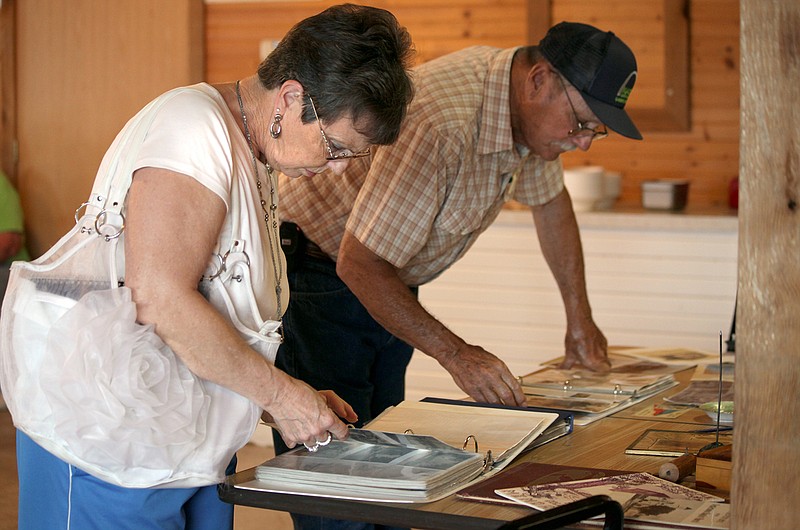CENTERTOWN, Mo. -- Memories of shopping at Vic Witthaus' store, dancing at Dixie Gardens to the sounds of the "King Cole Trio" band, the make-shift movie theater near Eckenberger's store showing Gene Autry films, and dozens of other moments in Centertown history were relived Tuesday at a meeting of the Cole County Historical Society in this Mid-Missouri community.
The meeting was the second presentation of the historical society's summertime series, "Getting To Know Our Communities."
More than 75 people filled the side dining room of Tammy's Restaurant in Centertown. Longtime society board member and evening hostess Leah McNay was "pleasantly surprised" when she saw the turnout.
"I knew there was a lot of interest in the local community to learn more," McNay said. The series lets Cole Countians "share and learn from one another about the many communities that make up Cole County," she said.
The guest speaker, Lucille Strobel Rosenmiller, began her research of the community in the 1960s to find more about the western Cole County town she had called home after relocating to the area with her husband after their wedding.
"I consider Centertown to be a part of my heritage," Rosenmiller said. Her family lineage includes several Centertown residents, though she grew up near Russellville and Lohman. "I wanted to get more in touch with this community, so I just started asking questions."
Rosenmiller said the community was originally known as Lookout in the antebellum period before the Civil War, then was renamed and resurveyed as Centre Town in the years after the war.
There are several theories to the area's many names, she said.
"Whether it was the story of the railroad conductor telling people to look out for mail hanging from the trees near the track, or if the community was influenced from the 1863 Civil War battle at Lookout Mountain (near Chattanooga, Tenn.), I don't know the exact origin," Rosenmiller said.
The name Centre Town, as the town was known from the 1860s to the early 1900s when it was renamed Centertown. Both names come from the town's location, one mile west of the geographic center of Missouri.
Lookout was originally the end-of-the-line for the Missouri Pacific Railroad in 1855, before the line was expanded west to Sedalia and Kansas City.
In her presentation Rosenmiller said the connection to the railroad provided an economic boom for the city.
"There were seven grocery stores, a barber, doctor's office, a newspaper called the Central Missouri Leader and dozens of other shops," she said. The 1913 Annual Report by the Missouri Bureau of Labor Statistics lists the Central Missouri Leader as one of nine newspapers operating in the county. It was still publishing well in the 1960s, Rosenmiller said.
At the time of the Great Depression Centertown had grown to over 1200 people, and included Lutheran, Cumberland Presbyterian, and Baptist churches and an active school district. "Many do not know that the Baptist Church in the city limits was actually the second Baptist Church building," Rosenmiller said. "It replaced a church building at Lookout Grove."
Rosenmiller said one of the most surprising things she had discovered during her research was how the Centertown business community grew.
"Businesses thrived here," Rosenmiller said. Those businesses were hurt greatly when the highway bypassed the town in 1933, the buses stopped somewhere else along the highway and when the railroad finally closed the Centertown depot.
"That hurt this town right away," Rosenmiller said of the railroad closing the depot. "The highway made a big difference too, as people became more mobile and accustomed to shopping outside of their home community."
Betty Steck, who moved to the area in the 1950s and still considers herself a newcomer to the area, said she enjoyed Tuesday night's program.
"I have always liked history and I really enjoyed hearing about Centertown tonight," Steck said.
The final "Getting to Know Our Communities" will be held in Taos in late August.

